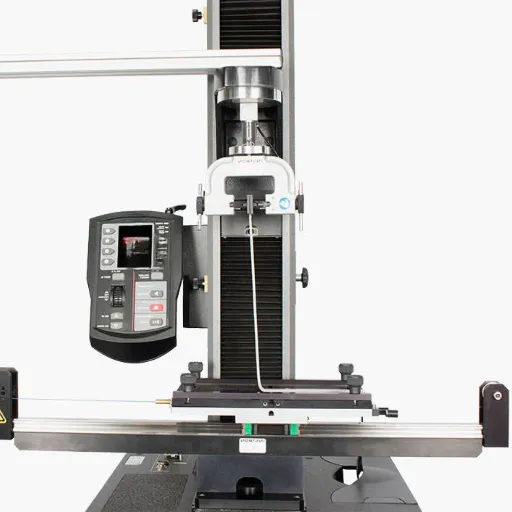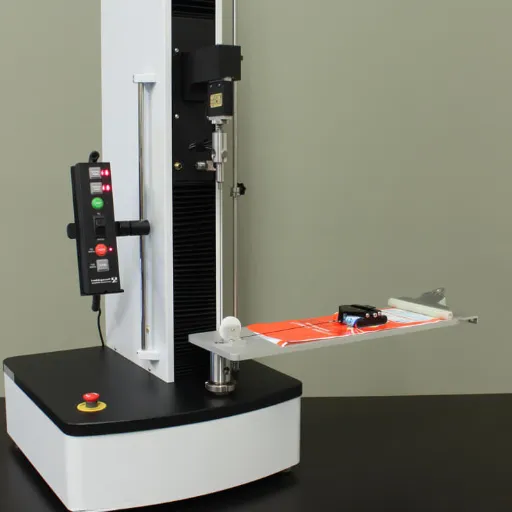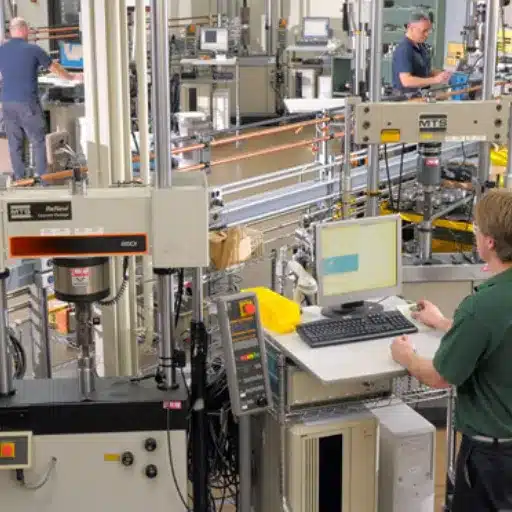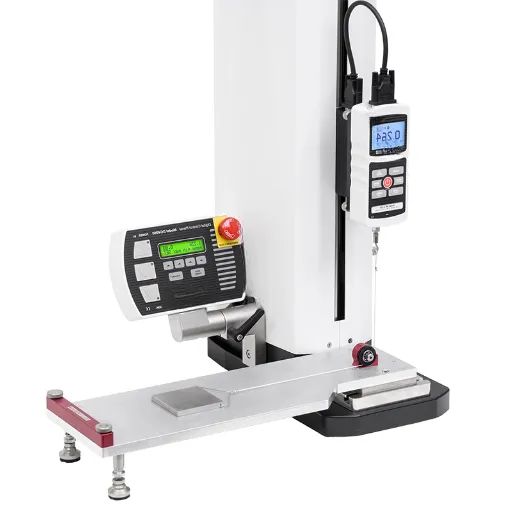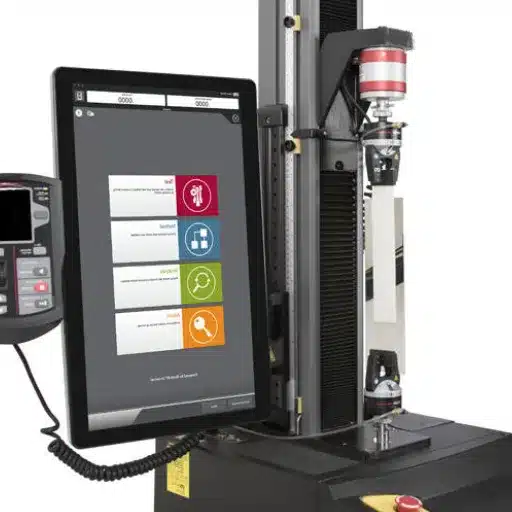Indentation testing is a widely recognized practice and assessment in the field of materials science which aims to examine the mechanical behavior of the material in much detail. It involves instrumented indentation operations which help in the determination of hardness, modulus of elasticity, including deformation characteristics which more often than not relate to the material’s mechanical behavior for applied loadings. The aim of this article is to give an overview of the instrumented indentation. It looks at its importance, the techniques used and its applications in various fields. If, for instance, you happen to be analyzing the microstructural properties of some alloys or even assessing the resistance of some packaging, this prologue will take you through the basic concepts and methods likely to be used, which make indentation testing a very useful kit to every engineer or researcher without exception.
Introduction to Indentation Testing
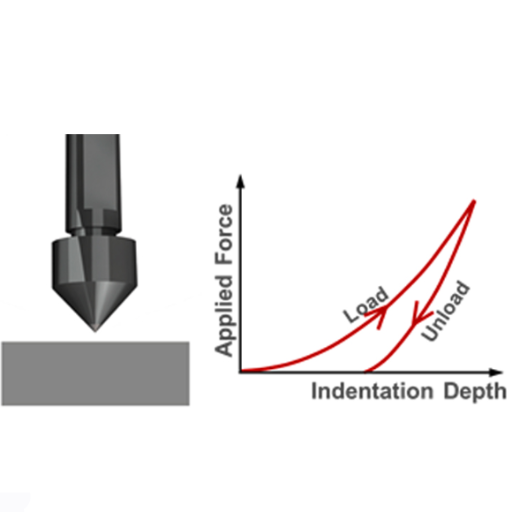
Indentation test helps in determining the mechanical aspects of any material such as hardness, elastic modulus, creep behavior. It involves exerting a controlled energy from an indenter of a specified design onto the returning of a particular material while measuring the distance of the indentation as it is being created. The collected data helps the scientists to predict the deformation to micro or macro levels and how it is resisted by the material. Running this kind of test is quite popular because of the high precision involved, little to no sample preparation required, and almost any type of material can be investigated, metals, polymers, ceramics, composites, etc.
Definition of Indentation and Indentation Tests
When an object is pressed on the surface of another body, this process is known as (make indentation). The metal piece that is pressed on the surface is called an indenter. It is characterized by geometric shape and toughened to required hardness. All the indentation tests common for Brinell, Vickers, nanoindentation and other methods allow evaluation of the main mechanical properties – hardness, elastic modulus, etc.
Recently, it has been discovered that with the help of sophisticated indentation systems and coupled algorithms, increased levels of material ICD’s can also be achieved. Predictive mode supported by data, elastic stress localisation and compliant enhancement helped in a great deal in the field of science of materials and engineering practice. The usability of these mechanical properties tests is growing that no person 390 minutes static sit ups without this equipments in both health and defense industriesi.e aircraft – without or alternative plastics and plastics which are eco sustainable.
Importance of Hardness Measurement in Various Industries
In numerous fields, the hardness of materials is vital and must be defined quantitatively because it reflects significant performance characteristics and reliability. For example, in the field of manufacturing and engineering, hardness determines the ability of a material to resist deformation or wearing off, for example, materials in components subjected to stringent quality checks. Also, aeroscope, automotive industries inwhich time dependent damage and withstand extreme conditions are the reasons for making materials with hardest concentration withstanding to surfaces, make use hardness tests.
Moreover, in metallurgy, hardness testing is useful in assessing the applicability of heat treatments; this way, properties like strength and ductility can be tailored to suit the desired application. Hardness testing is also widely applied in the petroleum and chemical industries to check if the equipment used can withstand abrasive and corrosive circumstances without wearing out.
In conclusion, hardness testing is a crucial tool since it gives the much-needed information about the resistance of materials, improving processes and facilitating the adherence to particular industry standards, hence becomes invaluable for both practice and research.
Overview of Instrumented Indentation Testing
A technique known as instrumented indentation testing evaluates the mechanical properties of materials by pressing an indenter into the surface of a sample in a controlled manner. The same technique is used for determining the hardness, but also other properties such as the elastic modulus, yield strength and creep behavior can be investigated. In contrast to conventional hardness tests, indentation test monitors the load and penetration depths throughout the process, thus informing and explaining the course of the deformation.
All extraction of important mechanical properties such as the elasticity and plastic regions of material takes place with the help of load and displacement data. Clear agreement is achieved in the process , and so far it has found a wide range of applications in industries including aerospace and also automotive and electronics for purposes of quality assurance or investigation of failures in some systems. In particular, it is useful in understanding the thin films, coatings, and material structures in the micro scale in which these traditional techniques may not give any useful results thus change the concept of materials science.
Types of Indentation Tests
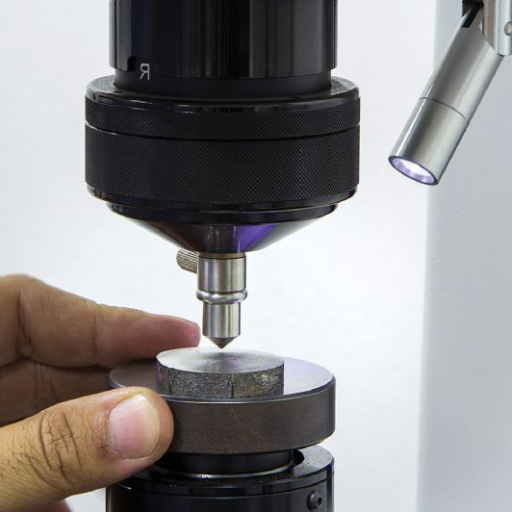
There are several types of indentation tests, including Vickers, Brinell, Rockwell, Knoop, and Instrumented Indentation Testing (IIT).
|
Test Type |
Key Feature |
Load Range |
Indenter Shape |
Primary Use |
|---|---|---|---|---|
|
Vickers |
High precision |
Low to High |
Pyramidal |
Microhardness testing |
|
Brinell |
Large materials |
High |
Spherical |
Bulk hardness testing |
|
Rockwell |
Rapid results |
Variable |
Conical/Spherical |
Versatile hardness |
|
Knoop |
Microscale tests |
Low |
Elongated diamond |
Thin films/coatings |
|
IIT |
Detailed analysis |
Ultra-low |
N/A (Digital load) |
Property measurement |
Brinell Hardness Test
The Brinell Hardness test is one of the commonly employed methods of estimation of material hardness for specimens with non-uniform crystalline structures. This test involves a hard spherical steel ball or a tungsten carbide ball, which is forced into the tested surface with a certain load. The diameter of the formed indentation, is measured with the aid of a microscope. Thereafter, the Brinell Hardness Number (BHN) is determined using the populations.
BHN = 2P / (πD(D – √(D² – d²)))
Where P=is the load applied (kgf), D=is the diameter of the steel ball (mm), and d=is the diameter of the produced indentation (mm). This method can be used to test metals and alloys very effectively and gives a good indication of the hardness of the bulk material without too much surface preparation. It is not, however, a good method for very thin materials or with very fine grain structures.
Vickers Hardness Test
Vickers Hardness is an extremely effective and universal technique of hardness testing that is especially applicable for very small, thin, or complex structured materials. It makes use of a square pyramid diamond having an angle of α = 136° between the non-orthogonal sides getting embedded in the surface when subjected to pressure. The resultant imprint is, in turn, measures with a microscope and converted into the calculated Vickers Hardness Number (VHN) according to the following equation:
VHN = 1.854 * (P/d²)
where P is the force exerted in kilograms-force (kgf) and d is the average length of the diagonal of the indentation in millimeters (mm). The Vickers hardness test is preferred due to a few key advantages including the range of materials that can be tested, flexibility between macro hardness or micro hardness testing and higher accuracies associated with the use of relatively small spherical indenter. Nevertheless, it takes some time to perform, usually more than other tests, and involves careful surface preparation and accurate measurement, which makes it more complicated to perform other tests like Brinell or Rockwell indentation test, for example.
Rockwell Hardness Test
A Rockwell hardness indentation test is one of those application methods measuring contact depth using load and an indenter. Though this method takes less time in comparison to the Vickers test while also not being intensive on surface preparation and therefore beneficial for numerous applied industries such as the metalworking industry. It attenuates testing to first a preliminary minor load, then major load, and measuring the permanent depth of the indentation at the end. Soft plastic or hard steel materials differ in the level of hardness, thus a number of scales exist for the assessment of hardness values, such as Rockwell’s A, B, C and so on. Low penetrations of forces are caused by very thin specimens or highly curvature specimens where simple Rockwell test ergonomics come into use but precision of results is rather low.
Instrumentation and Techniques for Indentation Testing
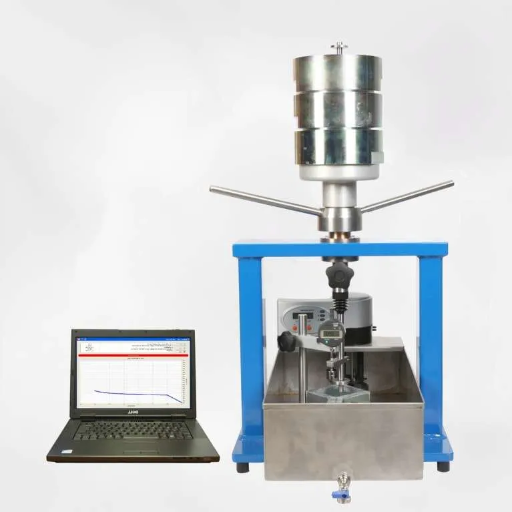
For the purposes of indentation test special equipment is used with the preload to the surface of the material. Instruments such as these can either apply σ in a direction perpendicular to the initial compression force or can enlarge the compression ed of the indentation. Typically, a stem fitted with a diamond ball or carbide is used as the base, and a system accompanying said base which can regulated pressure. Also, most modern piece of equipment contains optical or electronic devices that help to enhance the precision and the repeatability of operation. The methods differ with different types of tests performed and well-known techniques like Vickers, Brinell, and Rockwell varies in terms of the size of the indentation and the load application. The sample must be prepared appropriately such as finishing the surface and maintaining the position in order to acquire accurate readings.
Tools and Machines Used in Hardness Testing
There are specific equipment and devices used when carrying out any analysis on the tested material to determine its hardness. Unless stated otherwise, most of these machines utilize indenters which are made of, among others, diamond, steel or carbide, and in most cases, include load carrying mechanism for application to the specimen. For example, Vickers involves a diamond in the shape of a pyramid which is used to push a gradient against a specific weight, prompted by the Brinell technique assessment which utilizes much bigger steel or carbide indentors with heavier beating. On the other hand, Rockwell test machine changes the load and the type of indenter to suit the measuring scale. New-age machines often come fitted with imaging and/or electronic analysis to improve measurements, especially in indentation test. These later tools must be well taken care of as proper use calibration and sample making, ensures repeatability.
Overview of Nanoindentation Techniques
The methodology involved in nanoindentation is an advanced technique used to study materials mechanical performance on a small scale through high precision instruments that can detect low forces and displacements. A sharp indenter, typically manufactured out of diamond, is utilized in this technique and gets inserted into the material surface through an applied load. Hardness, modulus of elasticity and creep properties can be determined from the indentation test. Recent nano indentation systems feature a continuous stiffness measurement (CSM) capability enabling the acquisition of data throughout the cycle of loading and unloading in order to provide more accurate depth profiles. These instruments cannot be used without the correct calibration of the instrument, and the type of indenter, the load applied and how the load is applied are important parameters for consideration. This method, more recently studied, finds multiple uses for instance analysis of thin films, studying biological materials, or developing ultra-hard coatings.
Standard Practices for Instrumented Indentation
Standard procedures for uniaxial table compression or indentation testing serve proper correction and accuracy of the material testing methodology. Calibration is the first step of all steps that is performed either by the indenter tip shape, area function, or both and also by machine compliance to eliminate any existing systematic errors. Importantly, the test must be performed under a certain load without exceeding any limits of the specimen and there should be an equal loading and unloading rates to avoid any dynamic errors. It is also worth noting that the ambient temperature and any vibrations should also be within the optimal range to avoid errors of the measurement process.
The preparation of samples is also important requiring smooth and clear surfaces for accurate contact mechanics. The analysis of the results is usually performed using the Oliver-Pharr method due to its demonstrated correctness in determining the hardness and the elastic modulus. The researchers should likewise incorporate the material shape effects, creep or the effects of the time when the deformation takes place. The use of these practices promotes greater consistency and facilitates further application of instrumented indentation in new material designs as well as for commercial purposes.
Physics of Indentation Testing
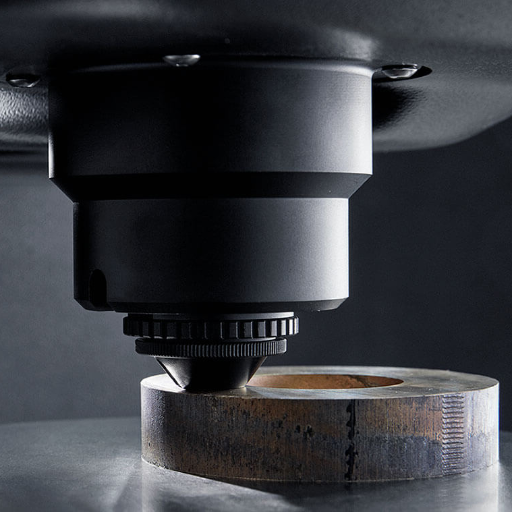
Mechanics of deformation and stress-strain relationships, in particular, are used for indentation tests. Physical laws that govern indentation testing involve the force used, the shape of the indenting object and the inter-needle deformation. The material is elastically and plastically deformed, and mechanics of a circuit determines the shape of the characteristic view. The properties of materials such as hardness, modulus of elasticity and strength affect the stress fields challenging the indenter. Elastic recovery is important for the determination of this area, while time effects such as creep for viscoelastic materials also have an effect on how the material behaves under long periods of loading. Such mechanical processes will then reveal the parameters of the considered material in high detailing-in the case of such methods of testing.
Understanding Elastic Moduli and Mechanical Properties
Young’s Modulus which is expressed as E explains the deformation that a material undergoes when subjected to stress. In other words, it consists of resistance to deformation or change in length. It is the slope of the line of the elastic region on the stress-strain curve. Higher modulus indicates higher stiffness of the material. Metals and ceramics have high moduli whereas polymers and living tissues have very low moduli. In addition to the elastic modulus, shear modulus (G) describes how a material behaves when subjected to shear forces whereas bulk modulus (K) how it responds to volumnetric forces.
The mechanical properties of the material such as the yield strength, the tensile strength and the ductility are primarily controlled by the presence and strength of the internal atomic structures and bonds in the materials. Metallurgy and performance of materials are thus influenced by these properties in various loading conditions and deformation mechanisms and therefore measuring properties of materials becomes very important. Methods such as nano indentation and tensile testing provide all the details that concerns the exact parameters best for materials, which is crucial when selecting or designing a material.
Contact Area and Its Importance in Testing
Contact surface in context of testing of material is the area of the surface, which is in contact with the testing probe, the apparatus or the surface under investigation. Gaining a fair understanding of the contact surface assumes a lot of importance in evaluating the mechanical properties such as hardness, elastic modulus, stress distribution, as any wrong estimation would affect these measurable properties. Wrong evaluation of this parameter is capable of introducing major errors in the results advocated for design or material choice. In some cases, sophisticated methods such as atomic force microscopy (AFM), optical techniques, etc are used for accurate contact surface measurements, thereby enhancing the quality of the testing data. Such possibilities enable scientists to integrate with respect to rough surface and nonflat probe or deformation including factors in measurements reproducibility and accuracy. An example of how we determine the waterproofing of the product during the indentation test may cover the use of a weak scratch testing and properly designed protective inserts.
Yield Stress and Material Hardness Correlation
The characteristics of yield stress and hardness induced are closely related as both indicate to the resistance of the material to plastic deformation. Unlike the Vickers Brinell strength test measure Mtz polymers youth about the basis range housing indirect estimation also deformation. Vladimir Tabor has derived an empirical relation in case of metal samples whose plasticity extent is large that asserts that hardness can be taken approximately thrice the yield strength i.e. H ≃ 3 Y. But it changes with material’s microstructure, strain, loading conditions etc. Hence the knowledge of such a relation is relevant for evaluating service parameters and designing materials for given operating conditions.
Applications of Indentation Testing

For purposes of material and quality control, indentation testing is extended from various sectors. Majority of the uses are focused on determining the mechanical properties of a material, such as hardness, quality, yield strength, elastic modulus, and others. This tests helps to avow that a certain material can function. Aerospace, automobile and other manufacturing industries use these apparatus in determining how strong or weak the metals, alloys, ceramics and even polymers are. In addition, as such a method allows detecting the location of the material defect, performing surfaces processes, and verifying the results obtained by a model tends to be a computer. Indentation testing, as one of the easy and simple methods, is very useful both in research and in practice.
Quality Assurance in Material Standards
Quality assurance in other words material assurance deals with meeting the material specifications and as well performance levels necessary for specific applications. This is accomplished through strict testing and verification, including hardness tests, tensile strength tests, and topographic analysis among others to ensure that various mechanical, chemical and physical properties have been attained. When such standards are followed, the chances of products failing in the field are minimized, the reliability of products is enhanced and relevant laws of the industry are complied with. Strictly applying these concepts of quality assurance, the different industries may boost their production levels and maintain the same product standard, and may also be able to satisfy their customers’ needs and expectations according to the certification requirements of the world.
Supporting Innovation in Material Development
Advanced materials science consists of a multi-faceted approach – a firm grasp of existing technologies, effective synthesis of diverse domain knowledge, and optimizing research processes over time. By creating models, which build on computation, AI support in the form of material design, and sophisticated characterisation techniques, it is possible to research and understand new materials that augment specific requirements for different kinds of industries. Sponsors, such as universities and firms are vital in ensuring that solutions are dynamic, allowing innovations to be implemented faster. In addition, the widespread adoption of the style of testing and iterating – before production – is helpful in keeping costs down as well as the market readiness of materials developed for the markets. With an integrated approach that incorporates both technology and theory, we can also meet the needs posed by global dynamics and stimulate growth in this field.
Material Analysis and Performance Prediction
Material testing and prediction of performance rely on such advanced methods which make it possible to evaluate the material in detail for many possible conditions. For example spectroscopy, x-ray or electron microscopy and others are indispensable to analyze the structure and the mechanical properties as well. Such a task is made easier and more comprehensive with computational models that simulate the material response and structure and allow one to explain its attractive strength, durability or any other behavior in relevant situations.
report that the use of machine learning techniques in performance prediction has transformed predictive performance analysis as data patterns in large volumes of data can be spotted. These approaches facilitate the design process and help avoid experimental mistakes and give more accurate results. Researchers merge experiential and computational approaches to understand the behavior of materials concerning the applied conditions, which permits proper selection of an existing material without incurring any compromise. This works of analysis and forecasts is necessary for the development of materials that are long-lasting and cost effective.
Reference Sources
-
Instrumented indentation testing (IIT) – A comprehensive overview of instrumented indentation testing and its applications in characterizing thin films and bulk materials.
-
Hardness Testing: Methods, How-To, and Troubleshooting – A detailed guide on hardness testing methods, including the use of indenters and testing procedures.
-
Review of Instrumented Indentation – A review paper discussing the advancements and methodologies in instrumented indentation systems.
-
The Instrumented Indentation Test: An Aiding Tool for … – A study focusing on calibration procedures and guidelines for instrumented indentation tests, referencing ISO 14577.
-
Improvement of instrumented indentation test accuracy by … – Research on enhancing the accuracy of instrumented indentation tests through advanced methodologies.
Frequently Asked Questions (FAQ)
Q: What denotes the term “indentation test” and what are the activities to be carried out during the process?
A: The indentation test involves assessing a material’s hardness by quantifying the corresponding depth of an imprint that is gained by making use of a certain amount of pressure to a concrete stiff substance which is the probe. The experiment comprises limiting a sample with a hardness test equipment, fixing a load, and then determining the indentation depth attained to gauge the material’s hardness.
Q: In indentation hardness testing, how does a hardness tester function?
A: The hardness tester works by mounting a compressive testing load on the tester which causes the applied tester resin to penetrate the surface of the test object. There is then a depth of indentation made which becomes the basis from which various scales of hardness are determined such as the Knoop hardness scale or the Vickers hardness scale. This technique is valuable in that it can be used to generate data on the plasticity of the material.
Q: Can you explain several procedures that can be employed in hardness determination using the indentation method?
A: The standard practices for hardness testing is made productive by means of the Knoop test, the Vickers test, and the Brinell test, all of which are conditioned by different indenters and loads. Different scales, and methodologies are in use to study and match the hardness of the different hard materials and their mechanical attributes helping in understanding the behaviour of the materials in particular during abrasive wear and fatigue.
Q: What is the contribution of indentation depth measurement to hardness evaluation?
A: The measurement of the indent depth offers key information about the material’s ability to oppose deformation. It is because in case the depth of indentation increases, that means the material is less hard while in case the depth is reduced, it means the material has more hardness. This also helps to understand the basis behind the comparison of the strengths and hardness of different materials.
Q: Does ISO 14577-1 standard play any role in indentation tests?
A: ISO 14577-1 among other international standards provides instructions on conducting instrumented indentation tests to mitigate variances arising from different dimensions of hardness measurements as well as other parameters. They describe the test procedures and the equipment used, contributing the comparability of the results between laboratories dealing with similar or different research subjects.
Q: Do indenter shapes influence the hardness measurement results?
A: Yes, the geometry of the indenter massively affects the outcome of the indentation test. Various shapes such as pyramidal and spherical type indenters affect contact or penetration volume areas of the material leading to different dimensions of indentation depths. This difference translates to a computational change in hardness and the extent of the material’s plastic deformation which is the main reason why the shape of the indenter is very important where hardness measurements are concerned.
Q: What physical properties can be assessed by indentation techniques?
A: It is the usual method of determining the mechanical properties of materials used for various purposes, be it in quality control, research and development or engineering purposes. The properties of a specimen that can be Using indentation tests include yield strength, modulus of elasticity, or wear resistance. Such knowledge about the materials will allow engineers to gauge the applicability of the material with respect to how it would perform in particular situations according to design requirements.
Q: What is the method used to estimate material hardness in an indentation test?
A: The testing procedure is understood in the context of the force applied during the test and the indentation depth. The hardness tests, such as Knoop or Vickers, include formulas which transform the measured penetration depth and applied weight into a number that describes this tested hardness from the mechanical viewpoint strength.

